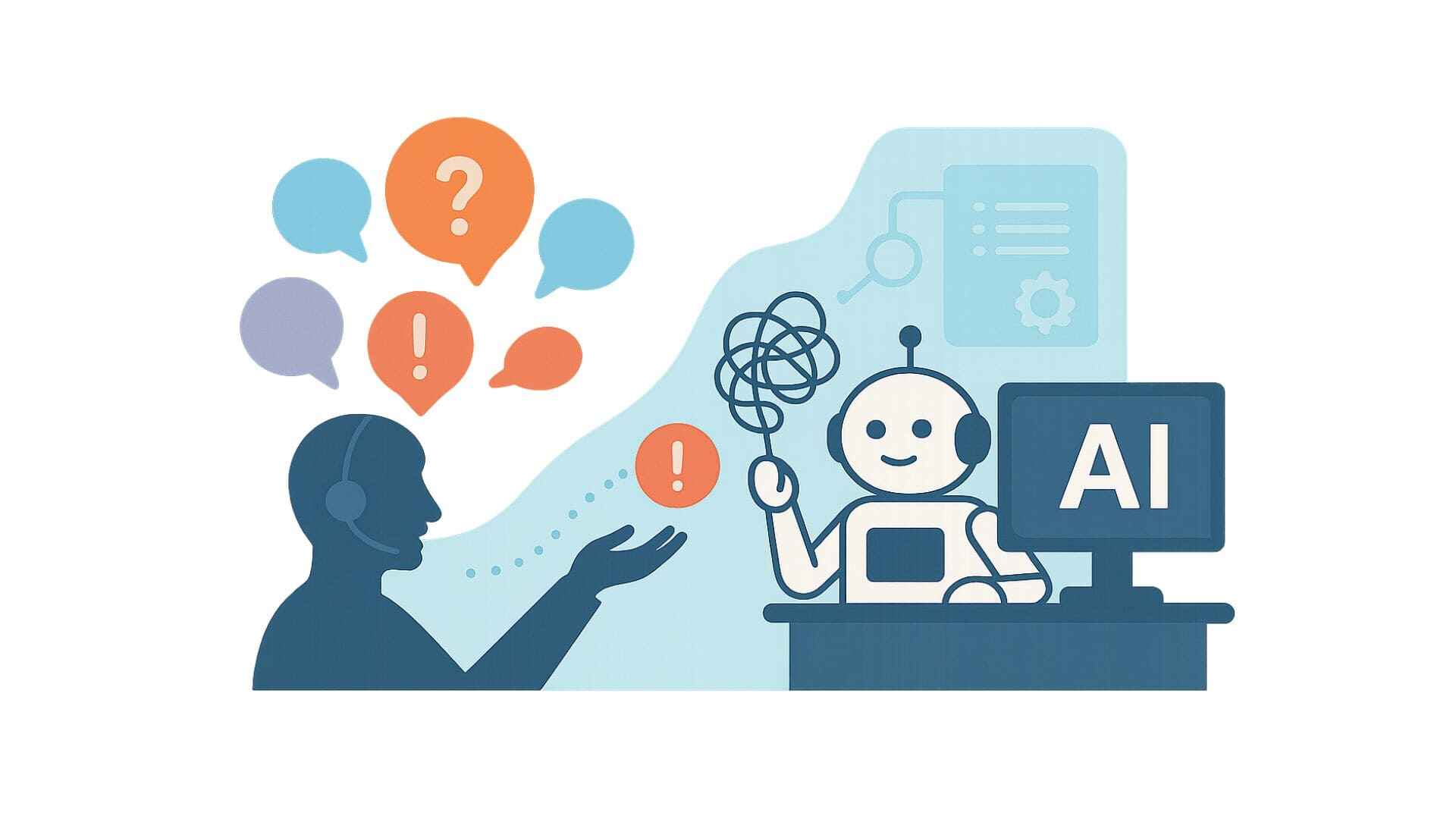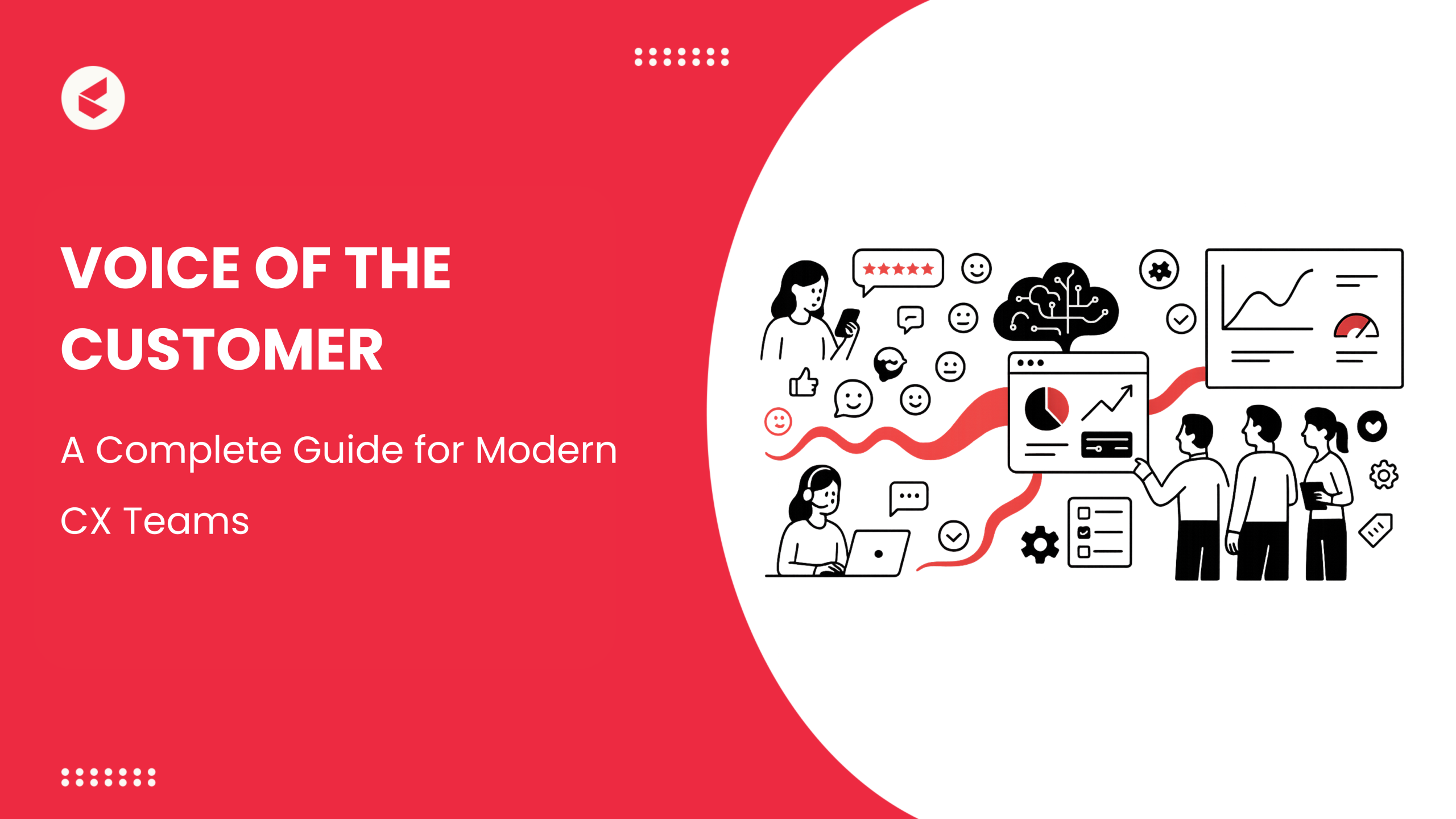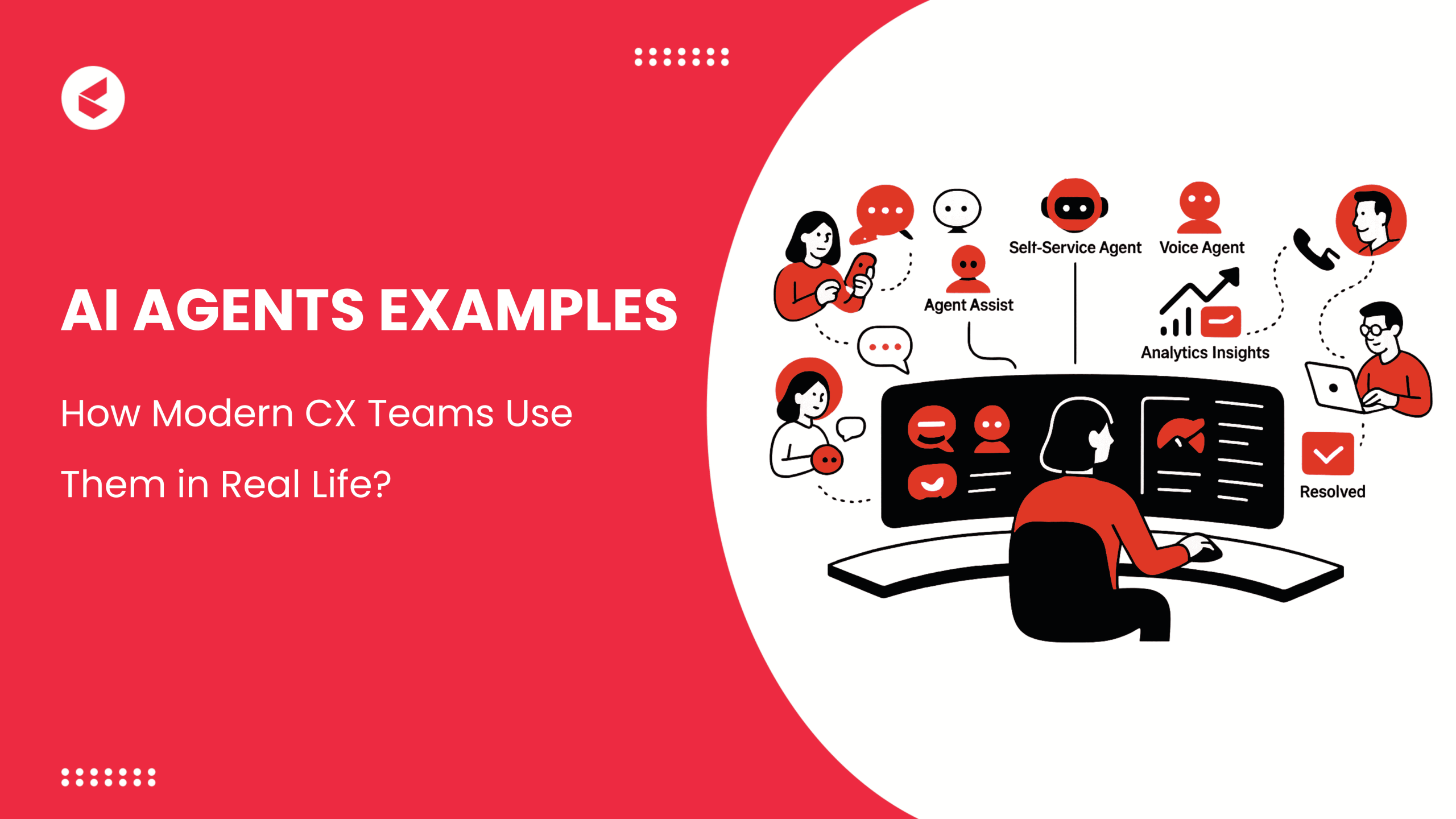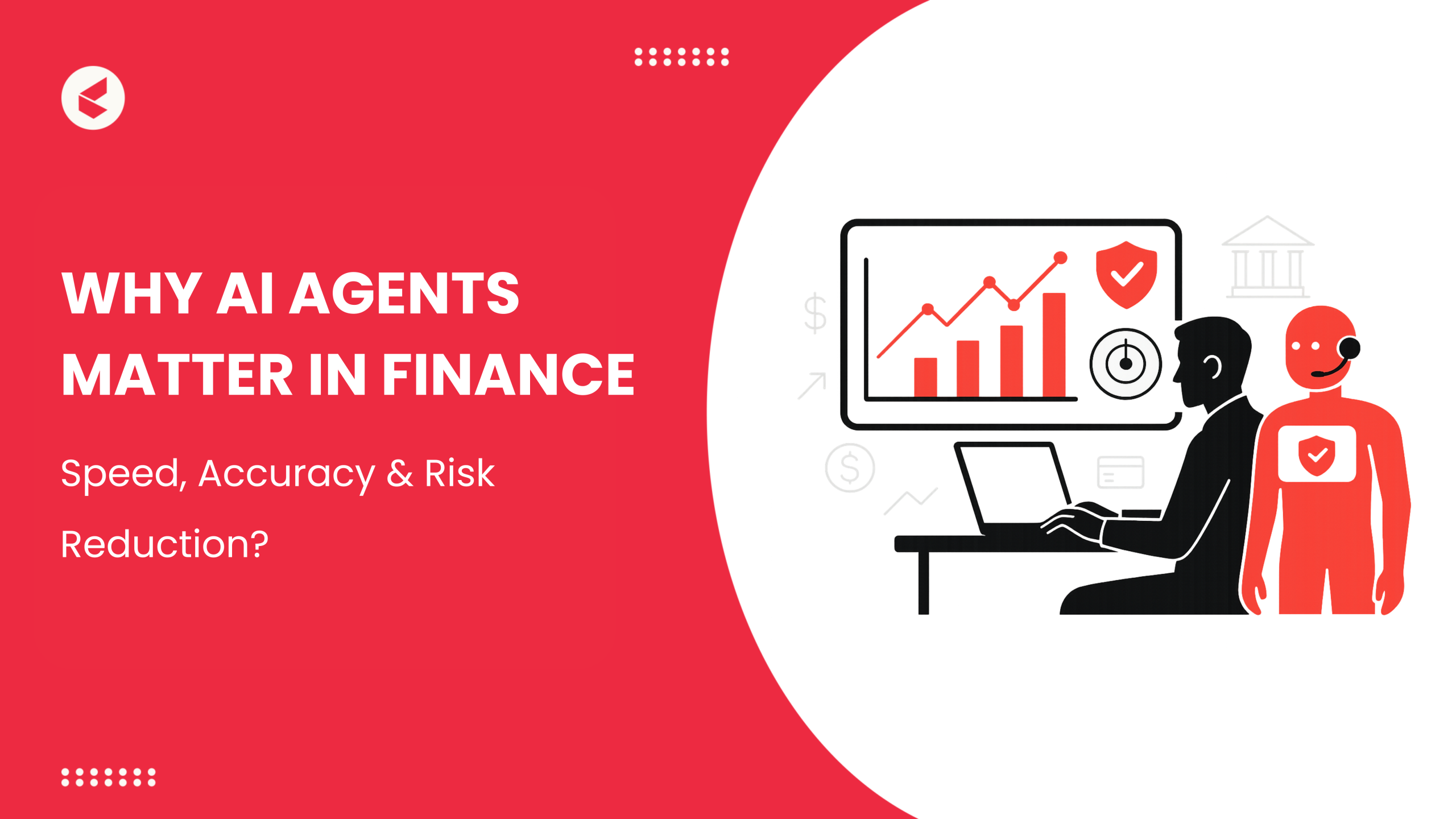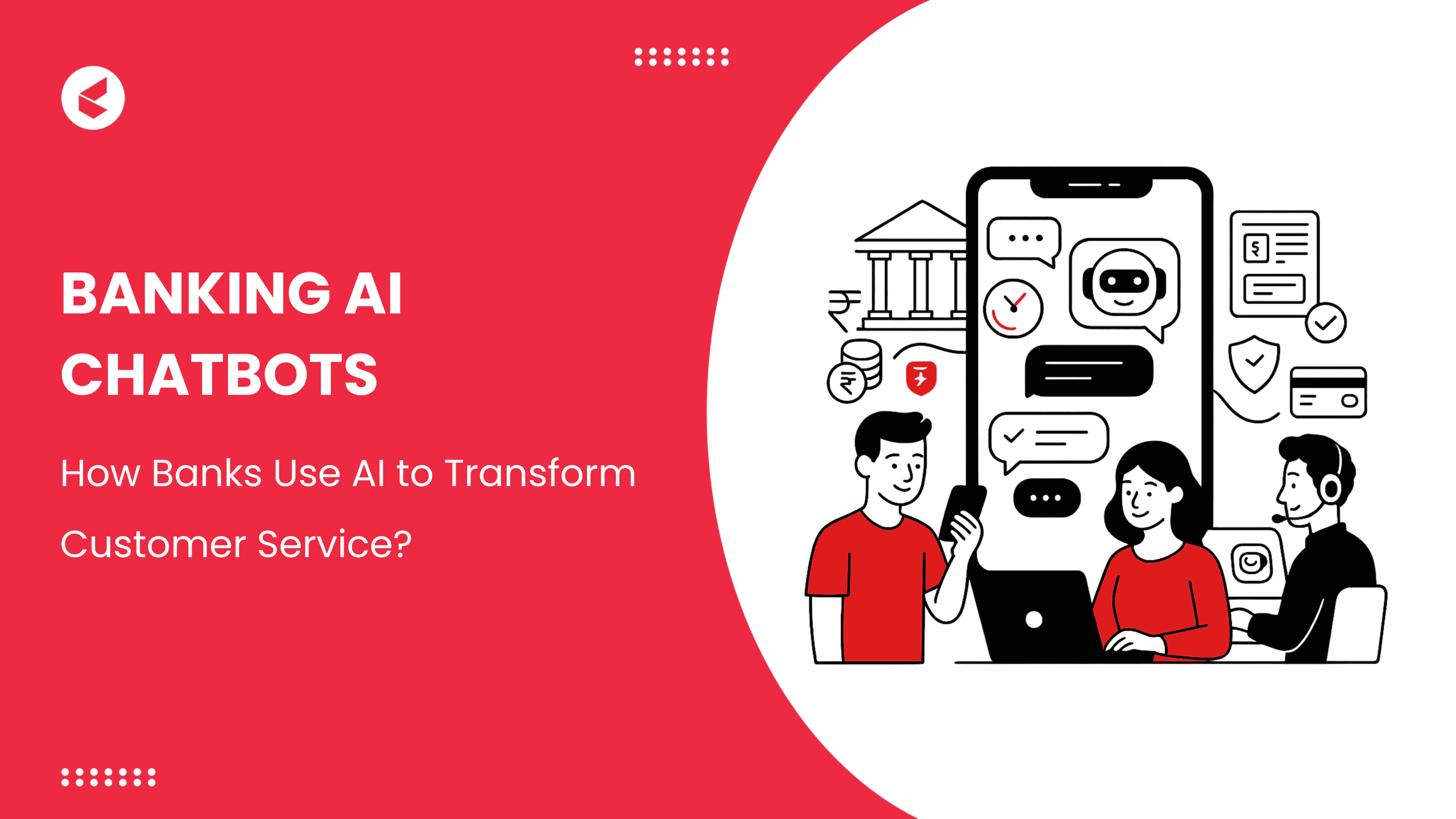Autonomous CX has become a central focus in customer service strategies. However, even highly advanced AI agents can encounter limitations. They may struggle with vague queries, requests that exceed policy boundaries, emotionally sensitive conversations, or unfamiliar languages. While many organizations move quickly to adopt automation, far fewer invest in preparing for the moments when it fails.
The need for strong escalation planning continues to grow. Gartner projects that agentic AI will handle 80% of common customer service issues by 2029. That still leaves 20% requiring human support, often involving more complex or emotionally charged situations. To maintain service quality, companies need to plan for the limits of automation and ensure a clear path for resolution when AI cannot fully address a query.
In unexpected or complex situations, systems without well-defined responses tend to fall short of expectations. Instead of aiming only for perfect performance, organizations should focus on how systems handle pressure. By incorporating clear handoff points, backup plans, and escalation paths into the design, systems become better equipped to maintain consistent service quality.
Where and Why AI Fails in CX
AI tools in customer support are designed to manage repetitive tasks and simplify service operations. They work well in many standard situations, but their performance often breaks down in more complex or unpredictable interactions. These breakdowns tend to fall into two areas: knowledge failures and contextual failures.
1. Knowledge Failures
These occur when the system is not equipped with the details or flexibility needed to respond effectively:
- Requests Outside Business Policy or Knowledge Base: If someone asks for a refund after the return period ends and the AI isn’t set up to handle exceptions, it usually refuses the request. Often, it does not suggest any alternatives.
- Technical Limitations: Every now and then, systems stall or time out unexpectedly. The chat just ends, and nothing gets resolved.
Take a situation where someone asks for help right after their return window expires. Instead of an actual explanation, the AI gives a flat response and closes the loop. A human agent might have chosen to provide a partial refund or forward the matter for more detailed examination.
2. Contextual Failures
These situations often happen when the system struggles with how something is said, rather than just the words used.
- Ambiguous or Multi-Intent Queries: A message like “I need help with billing and canceling the order” can be difficult for systems that are built to handle one request at a time. The AI sometimes only understands part of a message. Other times, it misses the whole point.
- Unexpected Inputs: People write in many ways. Sometimes they use slang or make typos. This can confuse the AI. As a result, the replies may not match the question or feel too mechanical.
- Emotional or Crisis-Driven Interactions: When customers are upset, their words show it. If the AI misses this, the answer can seem cold or scripted. That makes the problem worse. The person may feel ignored.
Addressing both types of failure leads to a more reliable support experience. When systems are designed to recognize their limitations and hand over at the right moment, human agents can step in with the full picture and respond more effectively.
The Cost of Unhandled AI Failures
When AI-powered customer support fails without proper safeguards, the consequences often extend beyond a single unresolved case. According to a 2023 Forrester study commissioned by Cyara, 30% of customers said they would either switch to another brand, cancel their purchase, or tell others about their poor experience after a negative interaction with a chatbot.
Even a single breakdown in an automated support journey can lead to lost sales, damaged reputation, and weakened customer loyalty. Key risks include:
- Broken Customer Trust and Churn: Poorly handled interactions can cause customers to quietly disengage. When issues are ignored or responses feel scripted or unhelpful, customers often leave without giving feedback, making the damage harder to detect.
- Reputational Damage: A single flawed AI exchange can quickly spread through screenshots or public posts. These moments can shape public perception and undermine brand credibility.
- Increased Manual Workload: Failed AI interactions often pass through to human agents without context. This adds pressure on support teams, slows down response times, and affects overall service quality.
- Regulatory Risk: In industries like finance, healthcare, and insurance, a mishandled support case may result in compliance violations, legal action, or audits.
Sometimes automation handles most requests well, but the remaining cases can cause the biggest problems if ignored. These challenging situations often involve emotions or complexities that carry more impact on the brand and operations.
To avoid this, companies need clear backup plans and escalation processes. The system must identify when it can’t fully resolve an issue or when the situation requires special care and then direct it quickly to a qualified human team to handle it properly.
Designing for Edge Cases and Escalations
Building an autonomous CX system that works in real-world conditions involves preparing for the moments when automation falls short. These situations do not reflect failure. Instead, they show that the system can recognize its limits and act accordingly.
1. Early Failure Detection
Strong systems are able to recognize when things are going off track. This includes monitoring for low confidence scores, repeated fallback triggers, and signs of frustration in user language. When these indicators are in place, the system can respond early instead of letting the issue escalate unnoticed.
2. Multi-Path Escalation
Not every issue should end up with the same person or group. It’s better to have different ways to pass things along, depending on what the problem is. Sometimes, a live agent is the right choice. Other times, it makes sense to involve a supervisor. And some situations are best handled by a bot that’s built for specific tasks. Having these options in place means the problem gets the right attention quickly.
3. Explainable Hand-Offs
When the conversation is handed over, the user should understand why. A short message explaining that the issue needs human attention helps set expectations and avoids confusion.
4. Context Carryover
A smooth transition depends on sharing what has already happened. Passing the chat history, metadata, and AI’s reasoning helps the human agent step in without asking the customer to start over.
5. Feedback Loops
Some support requests will fail. That is part of any system. The important step is what happens afterwards. Teams should log these cases, review them, and adjust system prompts or logic to reduce repeat issues. Each escalation can serve as useful input for improving how the system responds in similar situations.
When a case moves to a human agent, the quality of that transition matters. A clear and informed response can help repair the experience. Even if automation falls short, thoughtful recovery can keep the customer relationship intact.
How AI Platforms Should Support Failures Gracefully
For enterprises using AI in customer experience, success depends on automation and how the system manages uncertainty. Reliable platforms are designed to notice when something is off track and respond quickly to keep interactions on course.
- Configurable Escalation Rules: The platform should support flexible triggers based on low confidence levels, time delays, user sentiment, or repeated fallback responses.
- Real-Time Routing to the Right Agents: AI must be able to pass queries to agents with the right skills. These may include handling complex cases, working with high-value customers, or resolving emotionally sensitive situations.
- Monitoring Dashboards for Failure Clustering: Dashboards should help identify patterns in unresolved queries or high-frequency escalations. This insight makes it easier to detect friction points and prioritize fixes.
- Audit Logs for Queries and Hand-Offs: Every failed or transferred conversation should be documented. These records support internal reviews and compliance efforts, especially in regulated environments.
Surface-level metrics can hide where the AI is struggling. Observability tools help teams understand how queries are processed, where decision-making breaks down, and when escalations are triggered without resolution.
A platform that includes these features gives enterprises greater control over the customer experience. It allows AI to operate reliably under pressure while maintaining visibility into weak points and areas that need refinement.
Kapture CX’s Approach to Escalation and Fail-Safe Design
Kapture CX is built with the understanding that even the best AI needs support at times. Its design anticipates these moments and provides tools to handle them without disrupting the user experience.
- Intent-Based Routing for Low Confidence: The system constantly evaluates AI confidence. When it drops below a set threshold, queries are rerouted based on the customer’s intent and the complexity of the issue.
- Seamless Handoff with Context Transfer: If an issue is escalated, the chat history, AI reasoning, and metadata are shared with the next agent. This makes the transition smooth and prevents the user from repeating themselves.
- Built-In Feedback Capture: Kapture logs all escalated cases and uses them to improve its AI models. Misunderstood queries and repeated failure points are flagged for review, helping the system learn from real interactions.
- Consistent Design Across Channels: Whether the customer is on voice or chat, the experience remains consistent. The same logic, handoff method, and flow are used across both channels, ensuring consistency.
These features are not layered on after the fact. They are part of the core design of Kapture’s CX platform. Escalation is handled as a structured process, not an exception. By planning for edge cases and enabling clear transitions, Kapture CX helps brands deliver AI at scale without compromising service quality.
Conclusion
True autonomy in customer experience does not mean AI handles every situation. It means the system can recognize its limits and respond appropriately. Enterprises that account for edge cases and design for failure build stronger, more resilient customer journeys over time. Escalation is not the opposite of automation. It is the support mechanism that allows automation to grow without compromising service quality.
Kapture CX helps enterprises create intelligent CX systems that manage uncertainty, hand off smoothly when needed, and always keep the customer experience at the center, even when the AI cannot complete the task on its own.
Booking a personalized demo is a great way to explore how your support systems can scale with confidence.
